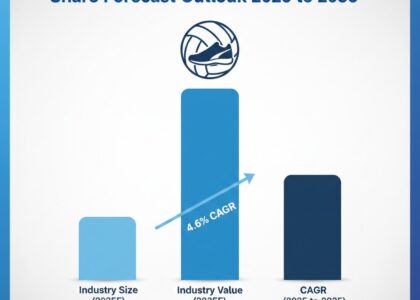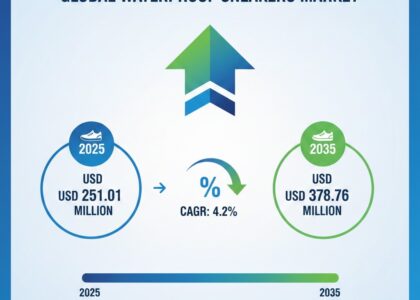In 2025, the global data catalog market is projected to reach approximately USD 1,677.7 million, with expectations to grow to around USD 13,406.2 million by 2035, reflecting a Compound Annual Growth Rate (CAGR) of 23.1% during the forecast period.
In a world drowning in data, modern enterprises are racing to harness analytics, automate decision-making, and unlock the full potential of digital transformation. Yet amid the buzz around AI, big data platforms, and cloud-native ecosystems, one foundational tool quietly ensures it all runs efficiently: the data catalog.
It doesn’t generate headlines or boast flashy dashboards. But without a well-structured, intelligently governed data catalog, even the most advanced analytics initiatives risk collapse under their own complexity. In the age of information overload, the data catalog is no longer optional—it’s operational infrastructure.
Get Ahead with Our Report: Request Your Sample Now!
https://www.futuremarketinsights.com/reports/sample/rep-gb-18537
Not Just Metadata—A Map to the Enterprise Brain
Most organizations now operate with thousands—sometimes millions—of data assets spread across cloud storage, databases, data lakes, and third-party platforms. A data catalog does more than document these assets; it contextualizes them. It tags datasets with business definitions, ownership, lineage, and usage history.
In essence, the data catalog turns raw data into findable, trustworthy, and usable knowledge. For data scientists, it accelerates discovery. For analysts, it clarifies meaning. And for compliance teams, it ensures traceability across increasingly complex governance mandates.
Overlooked in the Rush to Deploy AI
While enterprises eagerly roll out machine learning models and predictive engines, many fail to recognize that these tools are only as good as the data they’re built on. When teams can’t find relevant data, or when they use outdated or duplicate datasets, model performance plummets—and trust evaporates.
Ironically, as organizations invest more in automation and AI, the foundational need for data catalogs grows stronger. Without structured visibility into data pipelines, bottlenecks form, risks compound, and digital initiatives stall before they scale.

Buried by Silos, Rescued by Structure
Despite advancements in storage and computing, the average enterprise remains plagued by data silos. Marketing may operate in one cloud environment, finance in another, and product teams in a third—each with different naming conventions, access rules, and documentation (if any).
Data catalogs break these barriers. They offer a single pane of glass that connects disparate environments, mapping not just where data lives, but how it flows, who owns it, and what it means. This democratization is what transforms isolated data assets into enterprise-wide intelligence.
A New Standard in Data Governance and Trust
With global data privacy laws tightening and internal compliance needs escalating, the role of the data catalog is rapidly expanding. It’s not just an inventory—it’s an accountability engine. Built-in access controls, sensitivity tagging, and audit trails ensure the right people see the right data at the right time.
When integrated with policy engines and quality tools, catalogs help organizations move from reactive governance to proactive data stewardship—building a culture of trust around every data interaction.
Exhaustive Market Report: A Complete Study
https://www.futuremarketinsights.com/reports/data-catalog-market
From Static Inventory to Intelligent Assistant
The next evolution of the data catalog is already underway. AI-driven catalogs are learning from user behavior, automatically suggesting relevant datasets, flagging anomalies, and adapting metadata as systems change. This transforms the catalog from a passive repository to an active advisor.
Organizations that embrace this evolution will enable faster onboarding for new analysts, more informed decisions by executives, and greater resilience in the face of system or personnel turnover.
The Unseen Backbone of Data-Driven Strategy
In the race for digital leadership, enterprises that treat the data catalog as a strategic platform—not a background utility—will gain the agility, consistency, and intelligence needed to win. It’s not the loudest or most glamorous tool, but it quietly empowers everything from AI to compliance to customer insight.
Ignore it, and the best-laid data strategies will falter in chaos and confusion. Invest in it, and your organization unlocks true data maturity—where every byte is traceable, trustworthy, and tied to business value.






